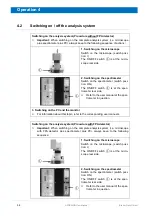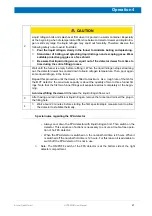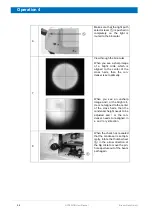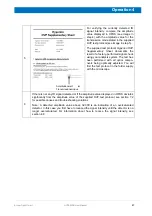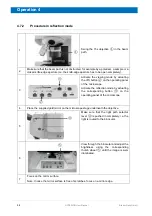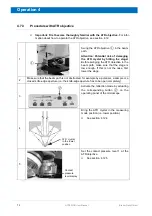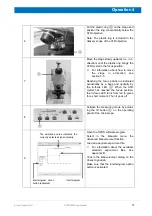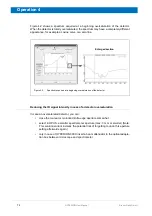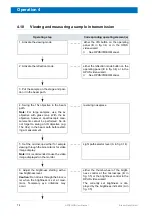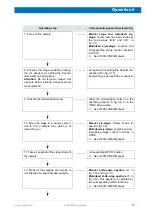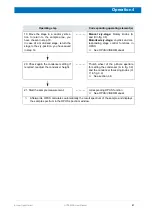
66
HYPERION User Manual
Bruker Optik GmbH
Operation 4
4.7
Checking the IR signal intensity
Before starting the spectroscopic sample analyses, it is advisable to check the detected
IR signal intensity. The precious procedure depends on the measurement technique
(transmission, reflection, ATR) you intend to apply.
4.7.1
Procedure in transmission mode
1
First check the condenser setting and correct it, if required.
☞
For information about this topic, see section 4.6.
➣
Note: The condenser is set correctly, when you a sharp image of a bright circle and
the circle is aligned to the center of cross hairs when you look through the binocular.
2
Activate the measuring mode by actuat-
ing the IR button
①
on the operating
panel of the microscope.
Make sure that the transmission mode is
activated.
3
Make sure that the beam path is not obstructed, for example by a polarizer, a sample or a
closed knife-edge aperture (i.e. the knife-edge aperture has to be open completely).
4
Open the OPUS software program.
Select in the
Measure
menu the
Advanced Measurement
function.
Load an adequate experiment file.
☞
For information about the available
standard experiment files, see
appendix B.
Click in the
Measurement
dialog on the
Check Signal
tab.
Make sure that the
Interferogram
option
button is activated.
①
The amplitude value indicates the
currently detected signal intensity.
Interferogram
option
button (activated)
Interferogram
Summary of Contents for HYPERION
Page 1: ...HYPERION User Manual I 24319 ...
Page 56: ...54 HYPERION User Manual Bruker Optik GmbH Overview 3 ...
Page 148: ...146 HYPERION User Manual Bruker Optik GmbH Repair and Maintenance 6 ...
Page 168: ...166 HYPERION User Manual Bruker Optik GmbH Specifications A ...
Page 172: ...170 HYPERION User Manual Bruker Optik GmbH Measurement parameters B ...
Page 174: ...172 HYPERION User Manual Bruker Optik GmbH Spare parts and consumables C ...
Page 175: ...173 Bruker Optik GmbH HYPERION User Manual D System diagram ...
Page 176: ...174 HYPERION User Manual Bruker Optik GmbH System diagram D ...





